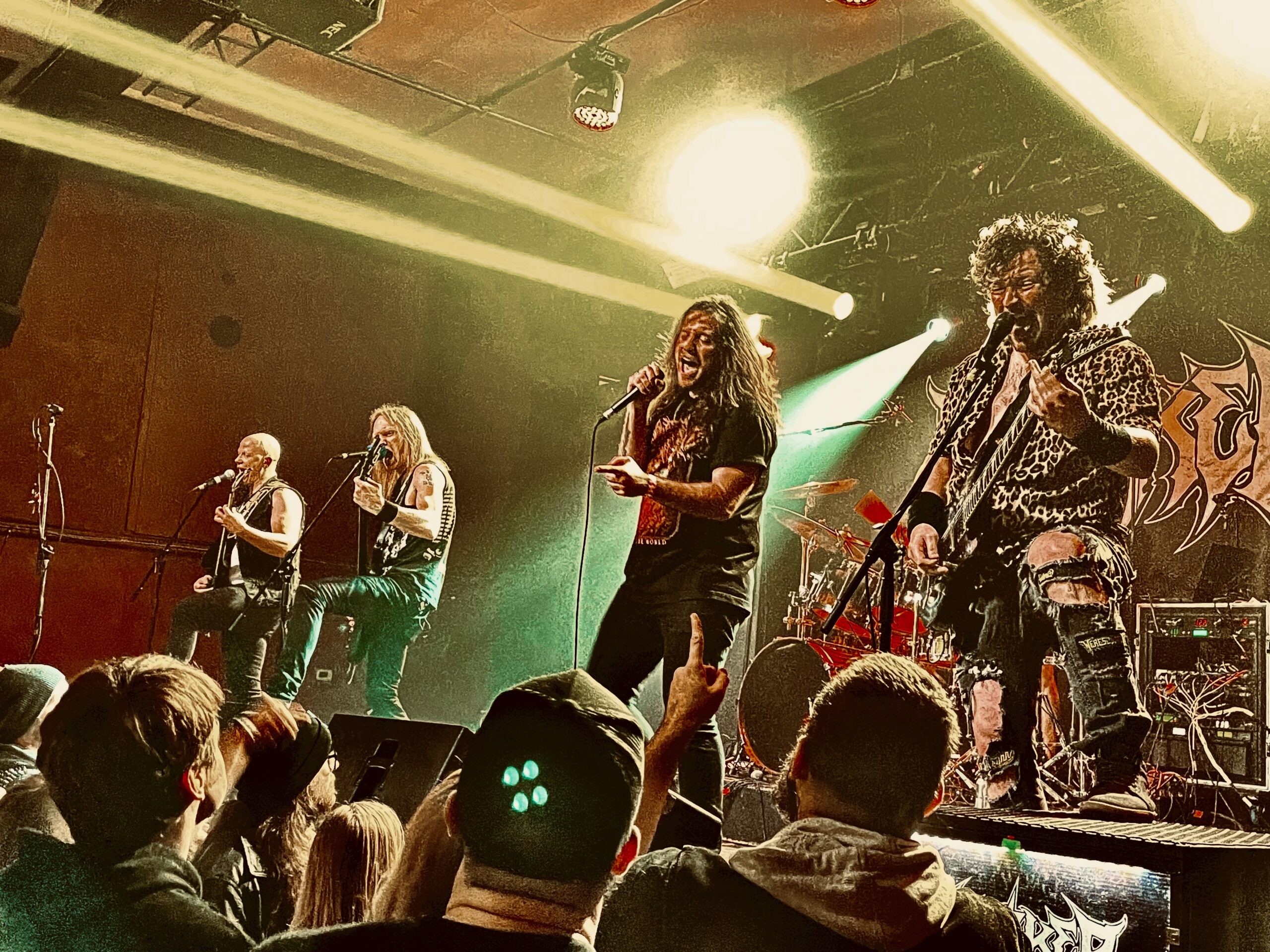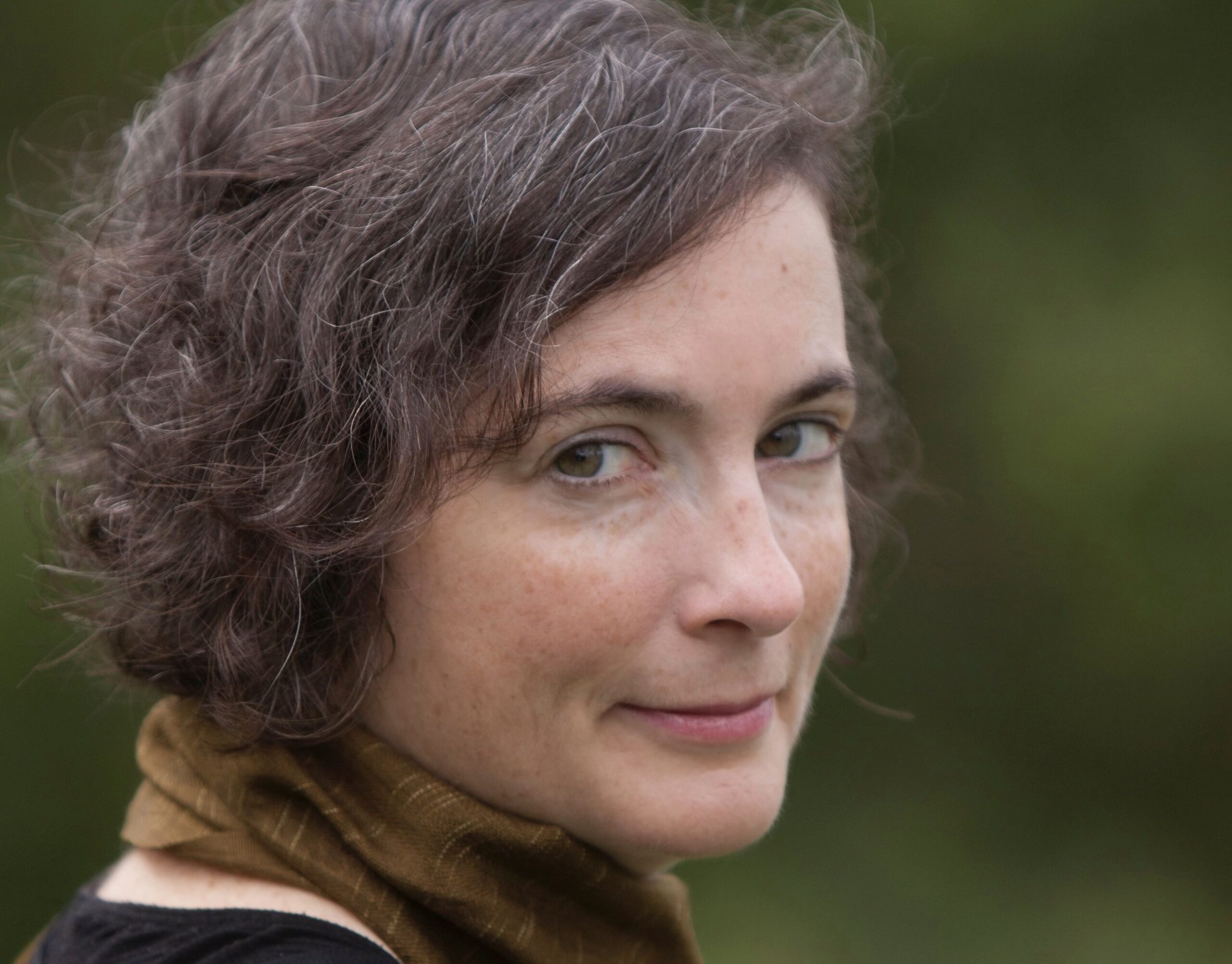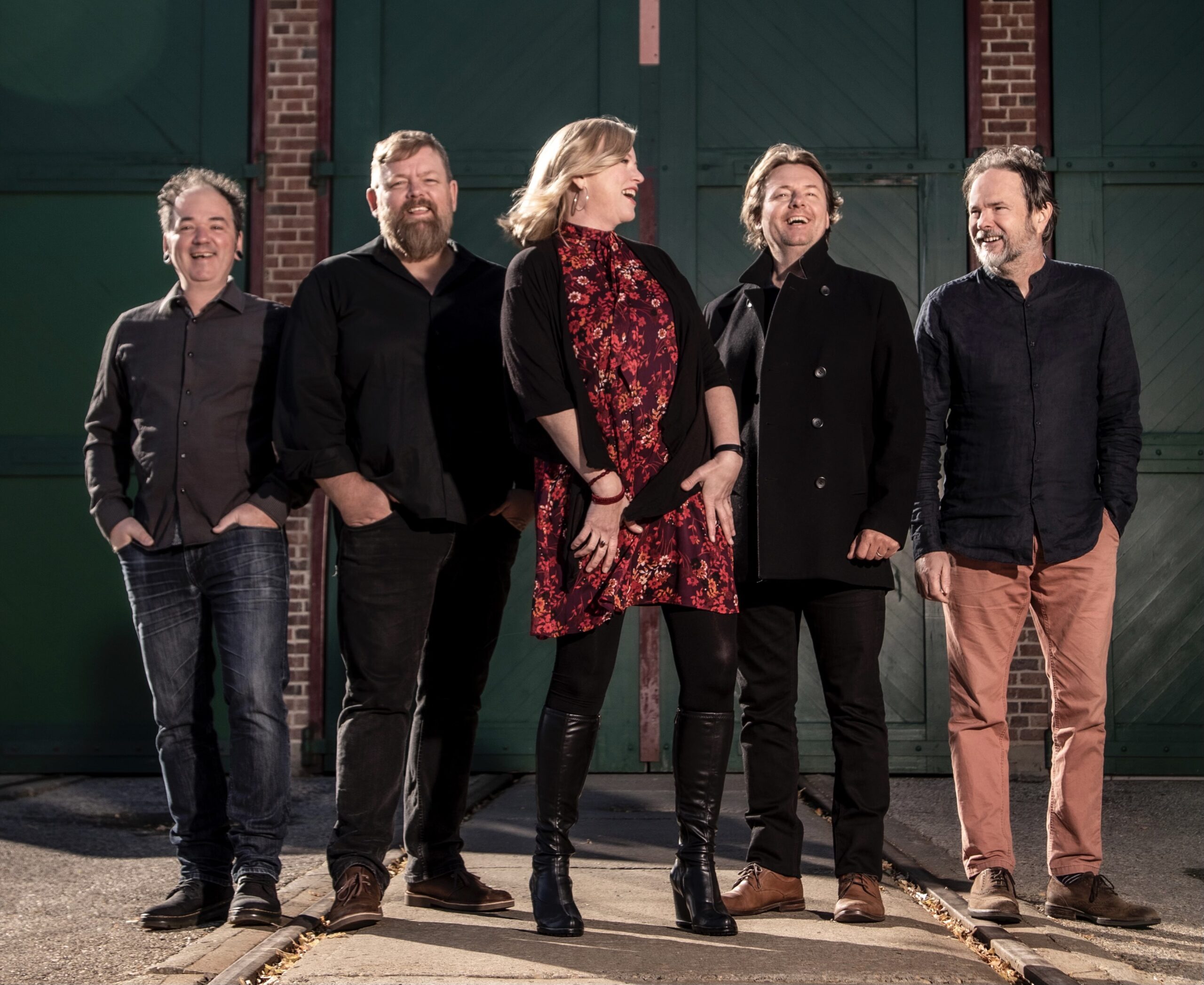For six years, Métis singer-songwriter Celeigh Cardinal and her son lived in the City Market Lofts in downtown Edmonton.
The building offers subsidized housing and counts musicians, actors and visual artists as some of its tenants. “It’s a beautiful community,” she says. “When I moved in there, I was able to start playing music for a living.”
It’s where Cardinal wrote her second folk/soul/blues album, Stories From A Downtown Apartment. She won a JUNO for it in 2020. Category: Indigenous Artist or Group of the Year.
Musicians from Edmonton have won 19 JUNO Awards since 2000. The city plays an instrumental role in many of their careers.
“The truth is I moved here from Grande Prairie to pursue music,” says Cardinal.
Singer-songwriters make up a good portion of Edmonton’s music scene, it’s true. (Seven of the city’s 19 previous JUNO winners fall into that category, including piano-pop artist Ruth B. and country star Corb Lund.)
Yet the scene is filled with artists of all genres—from hip-hop to electronic to classical to metal.
In 2020, Striker became the first local metal band to win a JUNO for Metal/Hard Music Album of the Year. The group’s album, Play To Win, features songs about seizing opportunities and givin’ ‘er.
“If you think about British heavy metal bands like Black Sabbath and Judas Priest, they’re from Birmingham, which was a very working-class town,” says Tim Brown, one of Striker’s guitarists.
“You could say we have very similar roots here in Edmonton. We grew up with all the people destined to work on the oil rigs and stuff like that.”

No matter what genre they play, Edmonton’s musicians tend to use the same word to describe their scene—supportive. Some of Striker’s albums and international tours were funded by grants from the Edmonton Arts Council, which has been boosting local arts since 1996.
Plus, Brown says local fans are some of the best in the world. (Striker usually performs at The Starlite Room, one of the city’s oldest downtown venues.)
“That’s because there’s not as much competition for live entertainment here. If you’re somewhere like Toronto, it can be difficult to get people out to your show because there’s so much happening.
“I always see touring bands skipping out on Edmonton because it’s a pain in the ass to get to, but there’s a ton of actual fans here.”
We’ve got plenty of music fans. We’ve got plenty of musicians.
Music industry? Not as much.
Edmonton is home to venues, recording studios, music festivals, indie labels, regional promoters and post-secondary programs.
Toronto is where most of the industry is located—including national talent and booking agencies, publicity companies, music organizations, media outlets, and major labels and studios.
Singer-songwriter Nuela Charles now splits her time between both cities, but she released her first four soul-pop albums as a full-time Edmonton artist.
Her debut, Aware, won the Edmonton Music Prize in 2013. The next three were nominated for JUNO Awards between 2018 and 2020: The Grand Hustle, Distant Danger and Melt. Category: Adult Contemporary Album of the Year.
Charles, who grew up in Kenya, Switzerland and the Bahamas, says the local music scene’s focus on art enabled her to fully and organically explore her craft.
“The one thing that I’ve really liked about my journey is being able to have the space and the time to develop myself as an artist, just allowing me to be myself,” she says.
As she grew—writing songs, recording albums, performing at The Starlite Room, Citadel Theatre, Folk Fest, and even on the Legislature Grounds—Charles also adopted the hallmark of Edmonton’s musicians.
Resilience isn’t the domain only of local musicians, it’s a trait shared by Edmontonians and Indigenous Peoples over the course of the city’s 130 years.
Singer-songwriter Maria Dunn likes to shed light on some of these historical tales of tenacity.
Her folk album, Joyful Banner Blazing, includes tunes about striking meatpacking employees and the Métis ironworkers who built the CN Tower on 101 Street. The collection won the JUNO for Traditional Roots Album of the Year in 2022.
Dunn thinks singing about the city’s history can be more evocative than reading about it. “I can deliver lyrics in such a way that is much more communal,” she says.
“People are listening to them together or they’re being invited to sing along. They’re hearing a story honoured through a song—and that’s powerful.”

Community is vital to Dunn. Many of her songs are the result of collaborations with other musicians, historians, and theatre producers.
She first started exploring Edmonton’s music community in the ‘80s as a volunteer for the University of Alberta’s radio station, CJSR 88.5 FM.
“That opened up this whole amazing world of live music,” she says.
“At some point, I discovered the Southside Folk Club and fell in love with the folk music that I had grown up with on my parents’ records from Glasgow. I saw [Vancouver’s] Spirit of the West there and they blew my mind.”
While that folk club no longer exists, others do—the Northern Lights Folk Club, founded in 1999, and the New Moon Folk Club, launched in 2015. Both are non-profit societies run by volunteers. Both host concerts featuring local and Canadian musicians.
The community spirit, resilience and strength of the local music scene is, in large part, due to Edmonton’s geographical location. It’s a relatively remote city, in a region of remote communities, far removed from the music capital of Canada.
“Because we’re isolated, we spend a lot of time seeing each other’s work and celebrating each other’s work,” says drummer Marek Tyler.
His indie-rock band, nêhiyawak, was nominated for Best Indigenous Artist or Group for its debut album, nipiy, at the JUNOS in 2020.
The isolation nurtures the growth of Edmonton’s musicians, too.
“If you’re going to tour, you better make sure that your product is good,” says Tyler. “It’s three hours to Calgary and then six hours to Saskatoon or 14 hours to Vancouver.”
Tyler also credits Edmonton’s musical diversity for making him a more versatile drummer. He’s played in cover bands, country-rock outfits, indie-rock bands and improv jazz groups—the last with late saxophonist Brett Miles.
“Brett really pushed me for a few years,” says Tyler.
“Every week, we got together at the Sugar Bowl and did this improv jazz set for three hours. Sometimes there were three of us on stage, sometimes 15. So I really learned new ways of expressing.”
Tyler says he’s also learned from watching singer-songwriters like Mike McDonald play an afternoon set at one of Edmonton’s bars, such as The Black Dog on Whyte Avenue or Cask & Barrel in downtown Edmonton.
Musical diversity is also key to multi-instrumentalist Jeremiah McDade’s journey. He’s a member of the city’s first family of Celtic folk.
As a child, he played in a band with his siblings and parents. They still perform together as part of a series of annual Christmas concerts at the John Walter Museum, a tradition nearing on three decades.
As a teen, Jeremiah sat in with blues bands at The Commercial on Whyte Avenue.
He studied jazz (and other genres) at what was then called Grant MacEwan Community College. He took lessons from visiting musicians from India. He watched legendary folk bands from Ireland and South Asian tabla players perform at the Edmonton Folk Music Festival in Gallagher Park.
“The Folk Fest was the only place I could do that,” says Jeremiah. “It had a massive impact on me.”

In 2007, The McDades—featuring Jeremiah, his brother Solon McDade and sister Shannon Johnson—picked up a JUNO for Roots and Traditional Album of the Year. Their album, Bloom, was more than just a collection of traditional Irish and Scottish folk tunes—it also featured Indian grooves, French lyrics and nods to jazz.
The band’s latest, The Empress, is even more adventurous. It’s nominated for Traditional Roots Album of the Year at the 2023 JUNO Awards in Edmonton.
Away from The McDades, Jeremiah also continues his musical wanderings—within Edmonton’s music community and as an ambassador for it.
He plays with several local acts, including folk artist Maria Dunn and jazz group Dave Babcock & His Jump Orchestra. They recently took part in a celebration of the life of Clarence “Big” Miller, an Edmonton jazz icon.
Editor’s note: the first image at the top of the page shows Celeigh Cardinal, left, and guitarist Braden Treble performing at 9910, a venue in downtown Edmonton, as part of a series of Road to the JUNOS shows. The image of Nuela Charles at the Edmonton Folk Music Festival in 2019 is courtesy of Emily Welz. The image of nêhiyawak features (from left to right) Kris Draper Matthew Cardinal and Marek Tyler. Courtesy of Levi Manchak.
Read about life in Edmonton—stories of business, innovation and the people who make it happen.
Read about life in Edmonton—stories of business, innovation and the people who make it happen.
Read about life in Edmonton—stories of business, innovation and the people who make it happen.